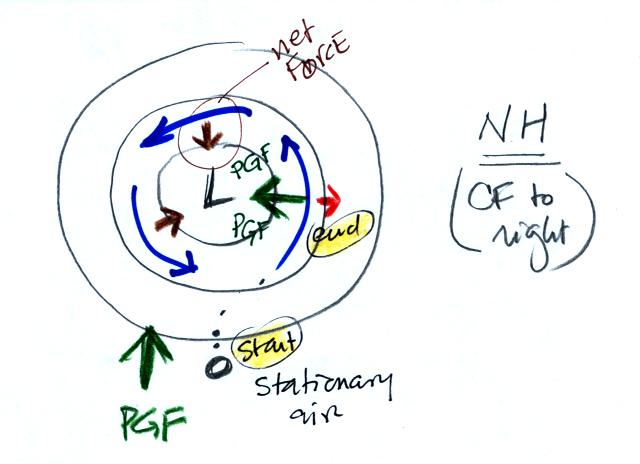
First draw in the PGF
(perpendicular to the contours and pointing toward low pressure).
Then the CF must point in the opposite direction and be of equal
strength in order to have zero net force. In this case the CF
points to the left of the wind (as you look downstream) so this must be
a xouthern hemisphere chart.















